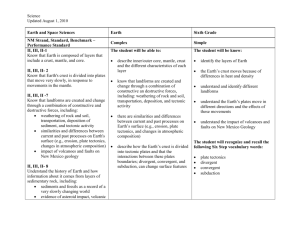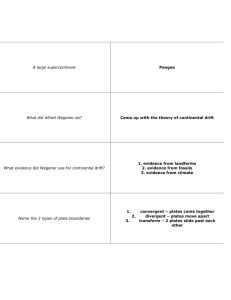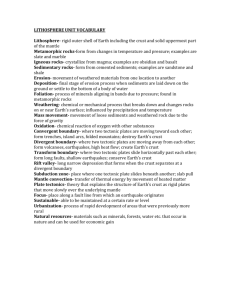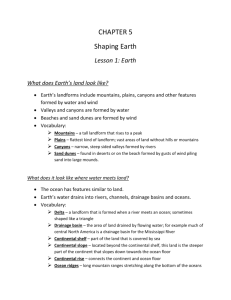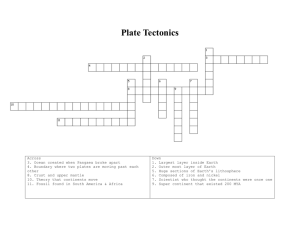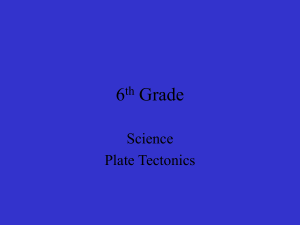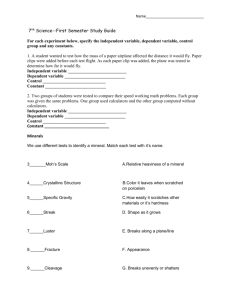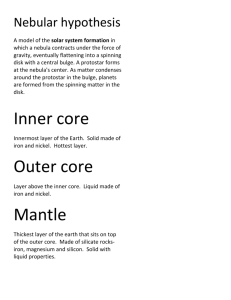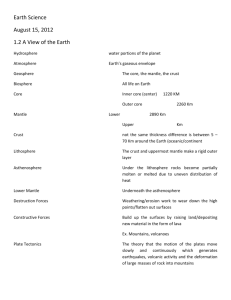plate tectonics - The Short Report
advertisement
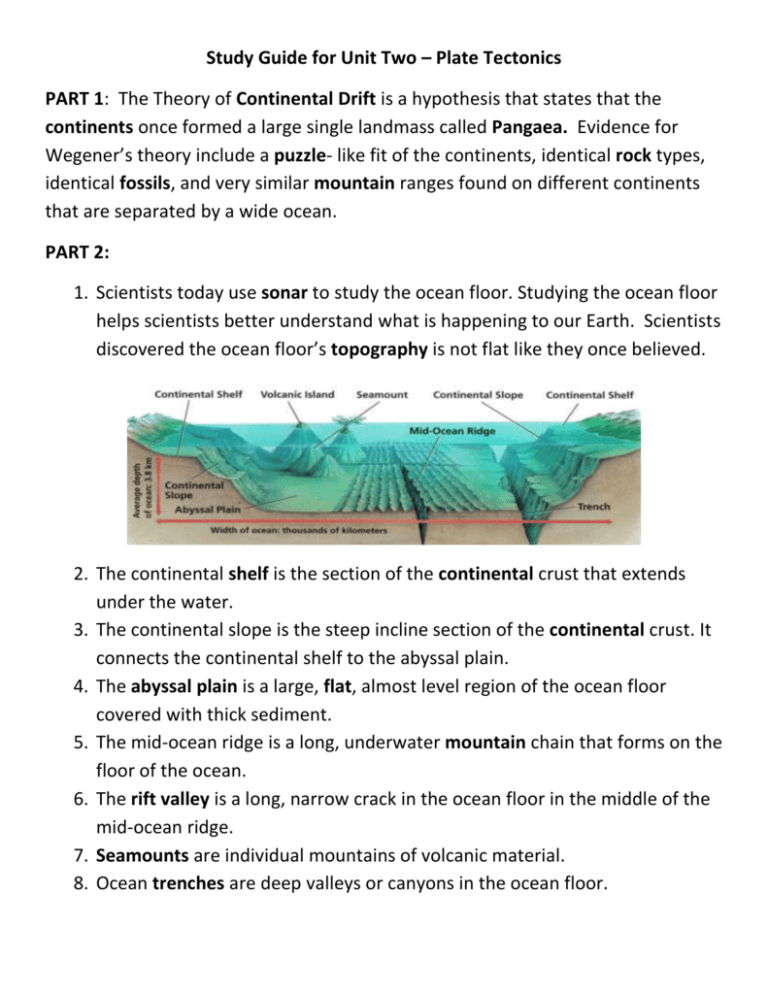
Study Guide for Unit Two – Plate Tectonics PART 1: The Theory of Continental Drift is a hypothesis that states that the continents once formed a large single landmass called Pangaea. Evidence for Wegener’s theory include a puzzle- like fit of the continents, identical rock types, identical fossils, and very similar mountain ranges found on different continents that are separated by a wide ocean. PART 2: 1. Scientists today use sonar to study the ocean floor. Studying the ocean floor helps scientists better understand what is happening to our Earth. Scientists discovered the ocean floor’s topography is not flat like they once believed. 2. The continental shelf is the section of the continental crust that extends under the water. 3. The continental slope is the steep incline section of the continental crust. It connects the continental shelf to the abyssal plain. 4. The abyssal plain is a large, flat, almost level region of the ocean floor covered with thick sediment. 5. The mid-ocean ridge is a long, underwater mountain chain that forms on the floor of the ocean. 6. The rift valley is a long, narrow crack in the ocean floor in the middle of the mid-ocean ridge. 7. Seamounts are individual mountains of volcanic material. 8. Ocean trenches are deep valleys or canyons in the ocean floor. PART 3: 1. Sea floor spreading is the process by which new oceanic crust forms as magma in the mantle rises through the rift in the mid-ocean ridge and solidifies (hardens) making new crust. This new crust pushing the older, colder, denser crust away from the ridge. This movement of the crust away from the ridge moves the continents with it. 2. The subduction zone is the area below the trench that pulls the cooler, old, and more dense crust into the mantle. The process of crust being pulled into the mantle is called subduction. So, the process of sea floor spreading creates new crust, but the process of subduction destroys the old crust. Therefore, the overall size of the crust does not change. Part 4: 1. The lithosphere is the solid outermost, rigid layer of earth. It is made of the crust and the upper part of the mantle. 2. The asthenosphere is the soft plastic layer of the mantle that flows very slowly. 3. Pieces of the “cracked” lithosphere (tectonic plates) float on top of the asthenosphere. As they float, they are in constant slow motion due to convection currents in the mantle. The moving of tectonic plates on the asthenosphere is the theory of plate tectonics. 4. Where these plates meet, events such as earthquakes and volcanoes occur. The place where plates meet is known as a plate boundary. Part 5: Convergent Boundary Divergent Boundary Transform Boundary Diagram Diagram Diagram When two tectonic When two tectonic When two tectonic plates move toward plates move or pull plates slide or slip each other away from each other past each other 5. A fault is a crack in the earth's crust resulting from the displacement of the earth’s crust. PART 6: 1. Geothermal energy is energy released by heat within the Earth. 2. Energy transferred as electromagnetic waves is called radiation. 3. A renewable resource is a resource that can be replaced at the same rate it is used.
